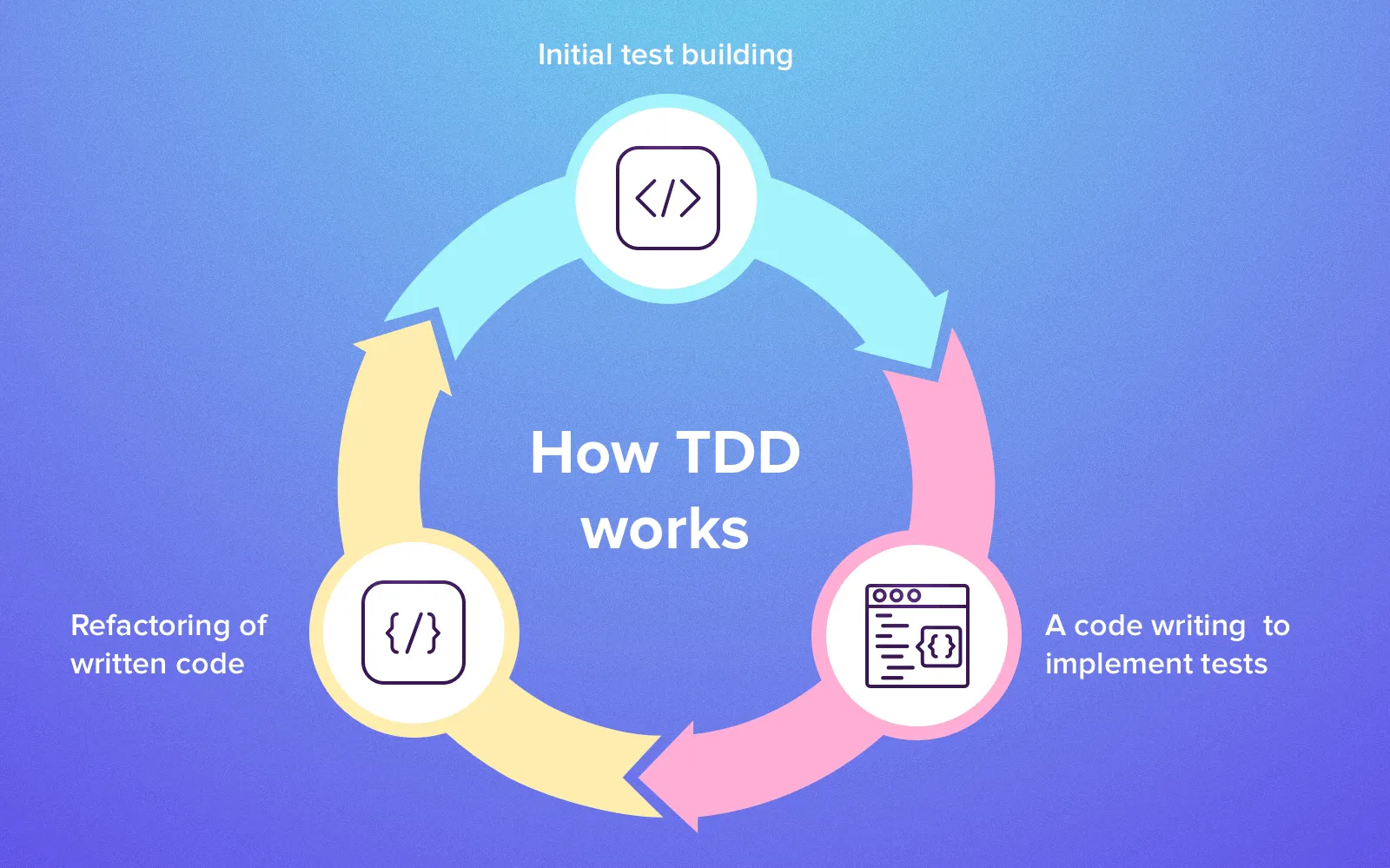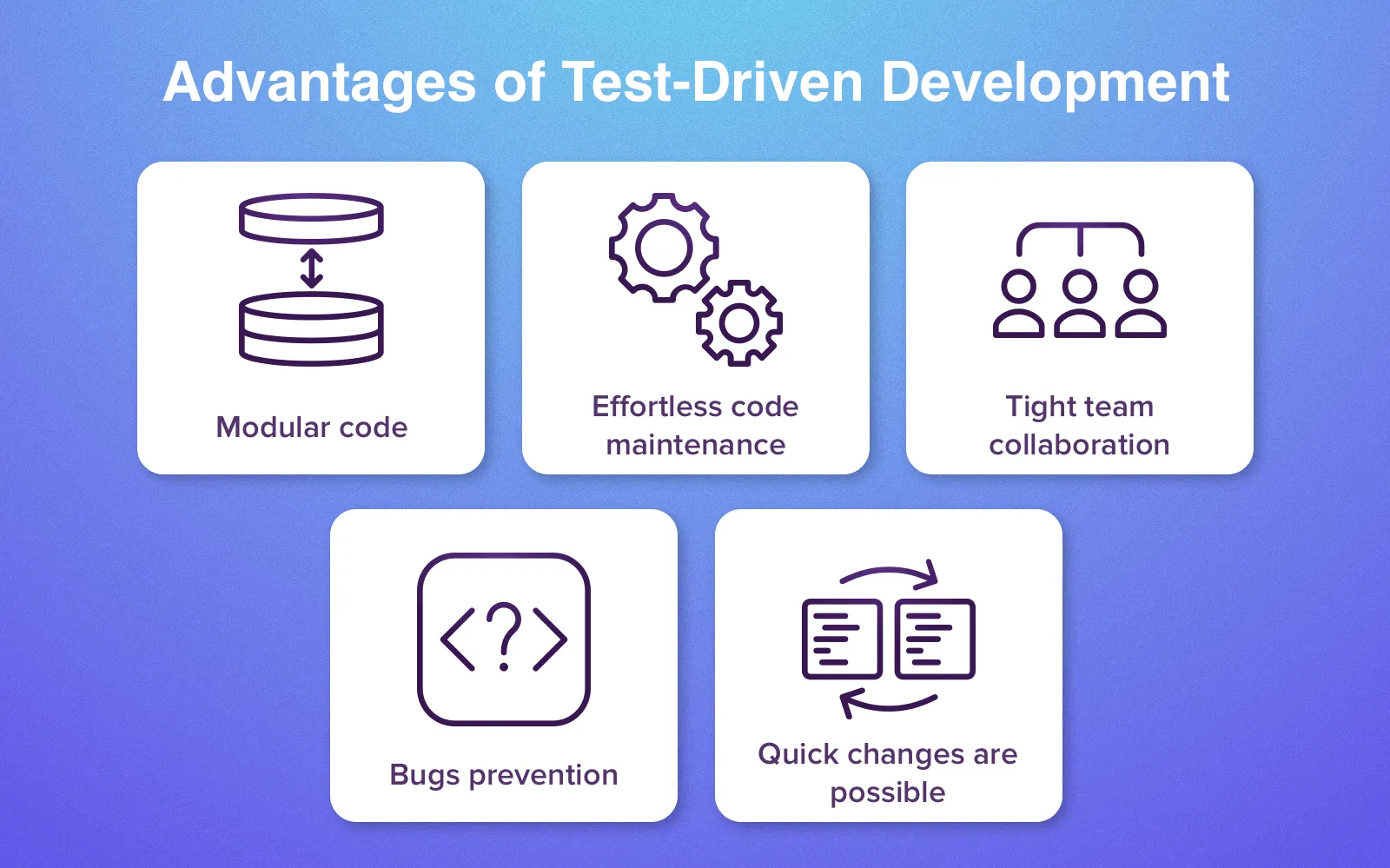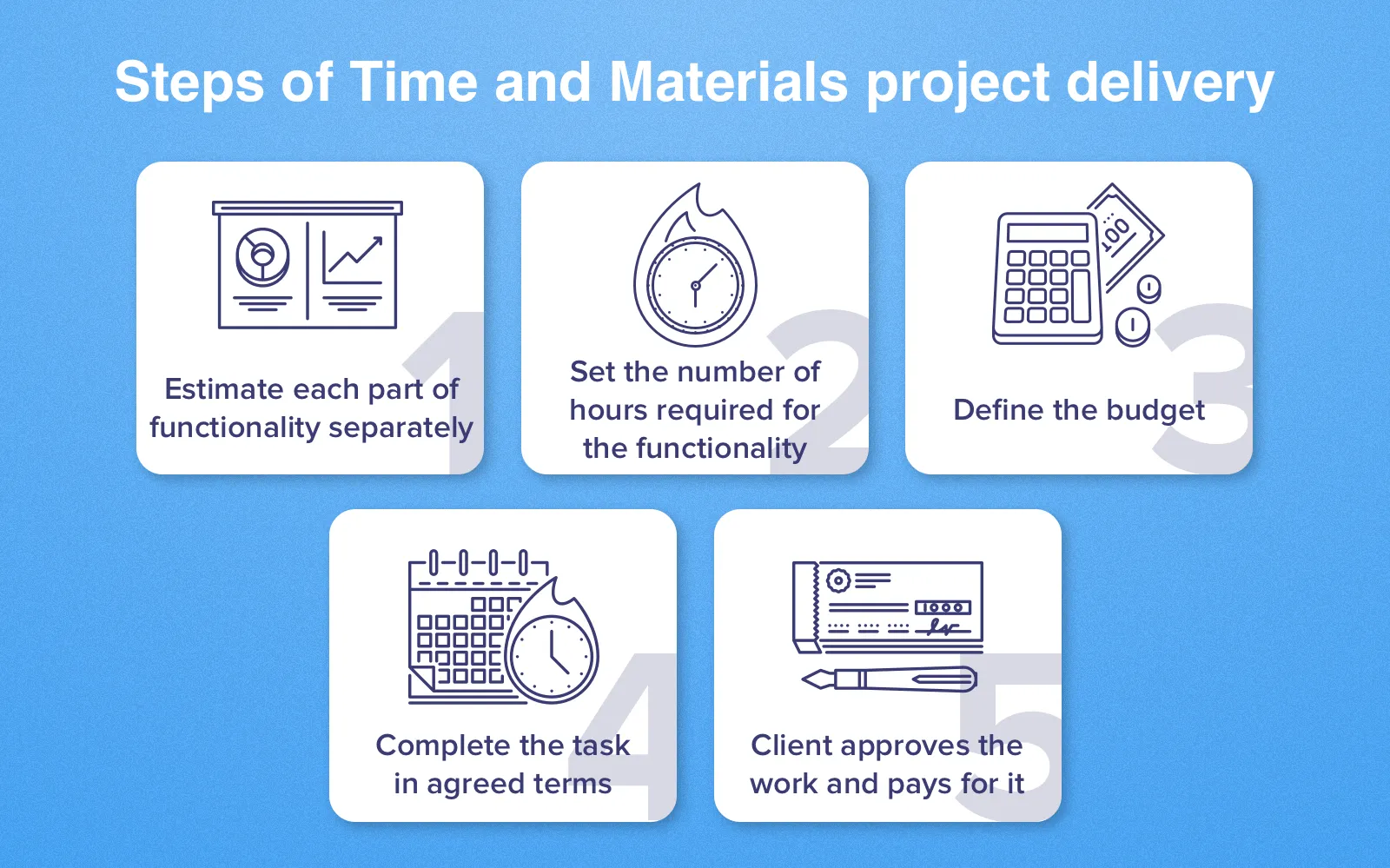Test-Driven Development: An Approach To Maintain Software Quality And Cut Costs
Updated 09 Nov 2022
9 Min
3412 Views
When we create a software for you, our task is not only to provide you with a first-rate software but also to offer good development model that will be valuable and cost-effective. So we would like to tell you about test-driven development methodology that is actively used by our developers. It has a lot of benefits and particularities that make your product cheaper and our work simpler.
Why do we use this methodology in a web or mobile app development services? Find out right now!
What is Test-Driven Development?
Test-driven development or TDD is a software development methodology that is based on the recurrence of short development cycles. How does it work? First, QA engineer creates a test that should cover all changes they need. Then, developer or QA engineer writes a programming code that implements the behavior of system they want to get in the issue. And this code should make possible to undergo a written test. Then refactoring of the written code with a constant verification of test efficiency is performed.

What is test-driven development and how it works
See how we test your Android app. Read 10 Android testing frameworks: the way your app becomes a first-rate product
By the way, all tests and software in TDD methodology can be created by one programmer. But, ideally, two specialists should be engaged in this process. It can be two programmers or one programmer and one QA engineer.
Why is TDD a good option?
Software testing is a procedure that helps confirm or refute the efficiency of written code and it's correct functionality. When testing is performed, the software requires input data and it requests the implementation of a specific command, and afterward, conformity verification of results is performed. If the result meets an expected point - a test is considered to be successfully finished. But in addition to manual testing, this process can be automated, and then testing process will go faster and more thorough.
Test-driven development tools help organize automated testing of developed software by writing modular, integration and functional tests that indicate requirements for code before developers write this code. So, what do we have in TDD lifecycle?
- QA engineer/Developer creates a test that verifies how accurate an unwritten code is;
- Then a developer writes a code that performs actions required for successful test implementation;
- After a successful test completion, revision and elaboration (refactoring) of written code is performed.
Now it is time to proceed to main benefits of test-driven development.
Advantages of test-driven development
At Cleveroad we can use test-driven development due to many reasons, and you will find all of them below.
Modular programming code
Since specialists write small tests at a time, and it helps them create more modular code, otherwise they can't be tested properly. Test-driven development is the right way to learn and understand basic principles of a good modular structure. Also, TDD tools make it possible to develop a good architecture. To make code testable, it should be a modular code. The matter is that various architectural challenges may arise when tests are written.
Easy refactoring and code maintenance
TDD provides all participants with a transparency of integration process and it also increases a security when developers want to reorganize the code that has just been written. Since TDD practices allow specialists to write modular tests before they write a final version of the code, it is much easier and faster to perform code refactoring. If a code was written a long time ago, it is rather difficult to make refactoring, but if that code was supplemented with a set of modular tests, refactoring process becomes much simpler.
Fruitful team collaboration
Test-driven development also makes it's contribution to the successful and more productive collaboration between developers. Team members can easily edit code that was written by other developers because if code starts functioning improperly due to new changes, tests will show it immediately. That is why test-driven development can be beneficial.
Bugs prevention
Given that we start from writing tests, not from coding, according to TDD principles, it helps us prevent any bugs that may arise during software development. Any problems with functionality or some other failure will be detected at the very beginning of the development since we test while developing. That means, the sooner we find a bug, the faster we fix it. Common bugs can be detected immediately.
Requirements clarification
In addition, using test-driven development methodology, we can clarify all requirements one more time and it makes our job more accurate. We can study again what input data we should provide, and what results you as our customer want to get.

Strong sides of test-driven development methodology
Learn how our company follows all quality standards. Read How we keep up with the quality standards at Cleveroad
That is the list of main advantages TDD brings to us and your software. But there is also one benefit we didn't mention - cost reduction. Price is a very important factor for any customer, right? And it also helps save the quality at a high level. I would like to pay your attention to this clause more deeply, so read about cost reduction with the help of test-driven development below.
Test-driven development reduces costs
Even when we are engaged in the test-driven development, and we create a high-level software without bugs, it doesn't mean that we spend less time on it. To create tests, our developers and QA engineers do their best to elaborate all future functionality in tests. But in the long run, it will be much faster since all functionality will be tested automatically upon each change or modification.
Why is Europe the best arena for software development? Watch this video:
The Cost of Software Development in Europe
And, despite the fact that test-driven development process is time-consuming procedure at first, then the development process goes much faster and it has a direct impact on the initial cost of the project. Since the development is moving faster when all software is tested continuously, and there is no fear that something can fail in the end. The fewer problems we have, the faster your project will be completed. That means you can reduce costs for your software development.
Test-driven development brings an automated auxiliary tool that prevents developers from fixing everything from scratch and verifying thousands of code lines manually.
That is why both parties benefit from TDD advantages - both Cleveroad and customer. If we meet all deadlines, it is also good for you since you save a penny. That is why we think that TDD is a very good approach if you want to create a high-quality product on time.
4 steps how we implement test-driven development
Here we would like to specify what TDD steps our developers and QA engineers should take to elaborate the whole process wisely. It guarantees a perfect result in the end.

Right steps developers should undertake to perform test-driven development
Create a scheme of all tests by order
A first step is to think over a set of all tests a specific app should undergo. We think that in the very beginning it is better to start creating tests that relate to refactoring of the software. And visualization of all test ideas is necessary. It would be a preferable way to write down how software will be tested cycle by cycle, and this scheme will help elaborate all testing process thoroughly. This step can be especially required if the software that is going to be built will face a lot of challenges. So, this step is one of the test-driven development principles.
Define all requirements
Then, no less important step is to set all necessary rules. If development team does it, all tests will be organized in a more efficient and logical way. Also, it is necessary to determine what testing tools will be used and make sure that they meet set standards. Besides that, if new team member joins this project, they will be able to delve into the development process much faster without any obstacles, since everyone follows rules that were set by test-driven methodology.
Discover all types of testing and why they are important. Read Basic and advanced software testing: what's the difference?
Divide implementation and testing
As test-driven approach shows, It is necessary to divide implementation and testing into two separate source directories. And two is the minimal figure since the number of directories can depend on the capacity of the project itself, however, testing and implementation must be divided for sure. It will help development team not to mix tests with productions binaries when packaging them.
Follow the order in naming test classes
It is preferable to give test classes the same name implementation classes have. As an example, implementation class is called MyInterface. Then, test class should be named like MyInterfaceTest. Moreover, it is better to divide classes by functions, it will make it possible to recognize tested methods. For instance, a class can be called MyInterfaceFixTest, if it is necessary to fix it. Following this step, it is will be possible to find tests among hundreds of others. Test-driven development process involves this step as well.
When test-driven development is better to use
So, as we told already, this methodology makes it possible to create a software that is applicable for automated testing and create good test coverage of code. Since all features that software should perform must be verified and tested. Also, test-driven software development allows to simplify software implementation, redundancy of implementation is excluded - if the component is covered with the test, it is considered to be efficient.
How to test your app properly to avoid any bugs arise in future? Watch our video:
Testing and Quality Assurance: All You Need to Know
Test-driven development can be used depending on a specific case, but, on the whole, the architecture of software products made with TDD is usually better. Stability of software functionality developed through the test is higher due to the coverage of all functional capabilities by tests and their efficiency is verified constantly. Developers can easily make changes in code, if something goes wrong - automated testing will show it.
These are main reasons and advantages of test-driven development and why we can offer you this development type. Of course, if the project you want to turn into reality is not big, there is no need to use TDD. Also, if the development requires a few steps of unusual experiments, and a customer doesn't know exactly what he or she wants to see in the issue - then TDD will bring more chaos than benefits.
Consider following all important GDPR rules. Read GDPR 2024: important EU directives for business owners to comply with
Our conclusion is the following - TDD is more acceptable for writing software where complex algorithms are used and if this software is elaborated from beginning to the end. If you think we need to use test-driven development for your project - drop us a line, we will help you make a right decision. Also, subscribe to our blog - subscribe button is on the right side!
Test-driven development or TDD is a software development methodology that is based on the recurrence of short development cycles.
First, QA engineer creates a test that should cover all changes they need. Then, developer or QA engineer writes a programming code that implements the behavior of system they want to get in the issue. And this code should make possible to undergo a written test. Then refactoring of the written code with a constant verification of test efficiency is performed.
- Modular programming code
- Easy refactoring and code maintenance
- Fruitful team collaboration
- Bugs prevention
- Requirements clarification
There are four crucial steps to perform test driven development:
- Put all tests by order
- Determine all requirements
- Divide and implement all testing operations
- Follow the order in naming test classes
Test-driven development can be used depending on a specific case, but, on the whole, the architecture of software products made with TDD is usually better. Stability of software functionality developed through the test is higher due to the coverage of all functional capabilities by tests and their efficiency is verified constantly. Developers can easily make changes in code, if something goes wrong - automated testing will show it.
Test-driven development can significantly reduce the cost of your project, eliminate possible bugs, and simplify code maintenance. It's definitely worth it.

Evgeniy Altynpara is a CTO and member of the Forbes Councils’ community of tech professionals. He is an expert in software development and technological entrepreneurship and has 10+years of experience in digital transformation consulting in Healthcare, FinTech, Supply Chain and Logistics
Give us your impressions about this article
Give us your impressions about this article